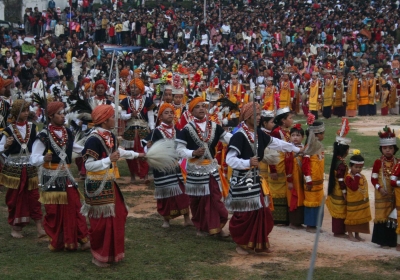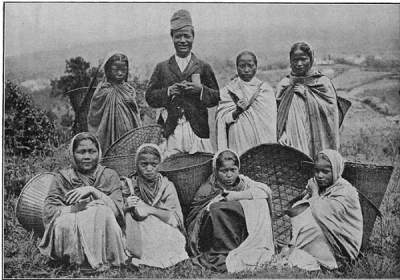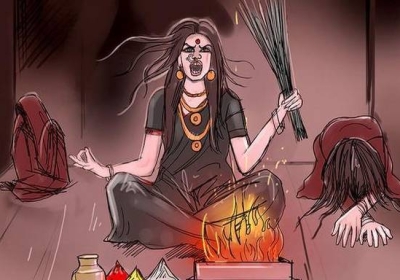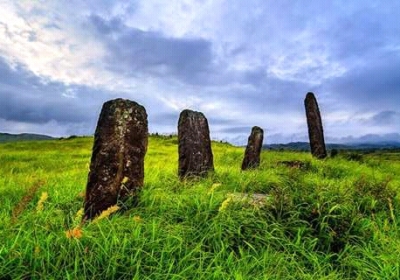Khasi Heritage: The Creation Myth
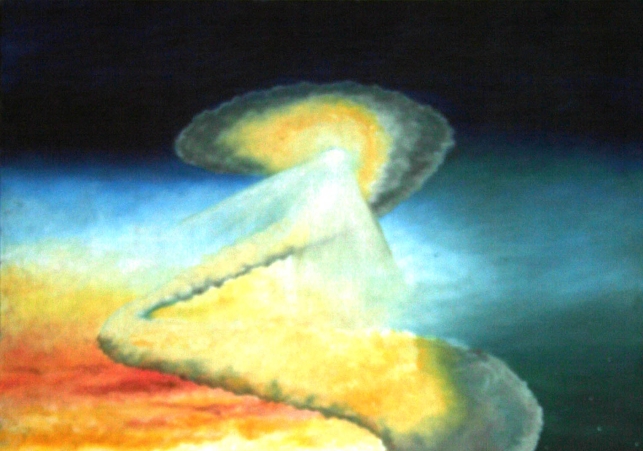
The human race is one among the species that has superlative power over the rest of the creations on earth. Every race has its folk literary tradition that narrates the ethnic origin of each particular community in the form of myths, legends, parables, and various types of folklore expressions. The knowledge of humanity and geography, anthropology and archaeology, and various other branches of science have discovered several pieces of evidence and rational hypothesis about the origin of mankind, all the creatures, and their surrounding environment. The worldview of almost every ancient race, perceived their respective territorial habitation, as the entire component of the universe. The Khasi race also has a similar concept about the world that the ancestors treasured as a repository of folklore in numerous forms. The various ingredients of folklore signify the ancient knowledge and wisdom that is being passed through generations. The storytelling through mythology, legends, and folk tales depicts the metaphor that could relate the ancient past with the present and be relevant to future generations. Many of these tales have vanished with time and a few have passed through oral narratives and perhaps some of them have diluted with the onslaught of modernity. Therefore, there is a need to motivate a post-modern endeavour to retain and preserve these treasures of folklore in a holistic manner. To begin with, a literal storytelling of the beginning is required to be followed with analysis and comments on the contemporary situation in society. The attempt may not be perfect, but a fair trial is set forth for posterity.
In the beginning, there was the word, the word became energy and energy became being. Time walks the earth, bringing in its wake humans, along with all the creations in the universe. The Khasi creation myth narrates that at the outset there was an empty space with a bare earth or Ramew which was still and silent. After several eons, the earth or soil becomes hard and transformed into stone or Basa. Ramew and Basa are the original binary elements responsible for creation. It is said that the earth was a lonesome matter without a life, who urged the supreme spiritual being and a divine force, the Mother Decree ‘Ka Meihukum’ and the Creator, ‘U Thawkur’, to command life to exist upon the earth. Thus, sound emerged from the encounter of earth and stone or Ramew and Basa and conceived certain substances, which after many eons matured and exploded and gave birth to the fundamental elements, known as the offspring of Ka Meiramew, the mother earth- the sun, moon, air, water, and fire. The birth of the five elements of energy in the cosmos is actually the explosion that spreads throughout the universe, which in Khasi means ‘Pur’ or spread and ‘Bthei’ or explode, and the combination of these two syllables, ‘Pur & Bthei’ is colloquially pronounced as ‘Pyrthei’ or World in the modern context. Literally, in the Khasi creation myth, the sun or ‘Ka Sngi’ is the eldest daughter of mother-earth, followed by the moon or ‘U Bnai’, the son and the other three daughters, air or ‘Ka Lyer’, water or ‘Ka Um’, and ‘Fire’ or ‘Ka Ding’. The offspring of Mother-earth generate their respective energy and gradually, after many seasons, vegetation starts to germinate and, within a stipulated period, every plant matures and regenerates seedlings before it rots or decays. Some of the rotten plants merged with other organic ingredients and gradually transformed into animated creatures, like maggots and worms. With the change of seasons and after a certain period of time, some of these parasites evolve into various forms of creatures like insects. The evolution process facilitates different species developing a variety of genetic classifications, like vertebrates and invertebrates, consisting of a wide range of reptiles, fishes, amphibians, birds, mammals, and many other animals. All the biological constituents regenerate from the reproductive encounter of the binary elements and that is the foundation of every life on earth according to the Khasi myth. In Khasi parlance, there are male and female plants, as well as male and female insects and animals for regeneration.
The need to rejuvenate and revitalise the environment for the congenial coexistence of all creations motivates mother-earth to give birth to Thunder or ‘Pyrthat’ and Quake or ‘Jumai’, the two offspring to regulate and control the environment. Thunder or Pyrthat has the jurisdiction of the celestial sphere and Quake or Jumai has the jurisdiction of the subterranean domain. Altogether, there are seven fundamental organic elements to create and control life on Earth. The initial five elements are meant to provide and sustain life and the other two elements are meant to regulate and control the entire components on earth. However, the earth lacks proper care and protection for certain creatures that could be vulnerable to others in their strive for existence and survival. Once again, Mother Earth pleaded before the divine forces for the care and regulation of all creations because plants and animals prevail on Earth without any regulation and control of their existence and motion. Ka Meihukum and U Thawkur summon the first-ever divine assembly of celestial beings or Khathynriew Trep Khathynriew Skum meaning the Sixteen Huts, Sixteen Nests. The divine celestial congregation resolved to provide seven out of the sixteen beings as supervisors to take care of the sustenance and survival of every creature on earth. The Seven Huts, or seven divine families, descended upon earth through the golden vines or Jingkieng Ksiar and landed atop the Sohpetbneng or the Heavenly Umbilical Peak to perform their duties towards creation. While on earth, the seven divine families are perceived as human beings. The diverse structure of every creation is liable to be encountered with each other, even as compatible existence is prevalent within their respective habitat. Therefore, intrusion and counter-interference occur among the various creatures, which leads to an ecological imbalance. The wholesome divine entity, resolved to provide every creature with a specific ability compatible with their soothing existence and adaptation to the surrounding environment. Every creation on earth is endowed with a certain attribute to sustain its respective endurance.
Ha pneh ka Meilisan, shibyllien hara metbneng;
Ka Meihukum ka ksan, bor Thawkur te ba thylleng.
Ka ktien ka ba la kren, ha ka por ka ba la mang;
Ha dum synñia myllen, meiramew te ba ka tmang.
Lisan ba ka thynrei, kat nang jlan ki sngi ki ïa;
Basa te la thehsei, ha ryngkew kyrsoi maïa.
Shongkha longblei la sdang, meiramew te ba ka kyan;
La kha la pun kyrpang, bor mariang te ba ka ksan.
Hawhaw la shat jingshai, la seilung sa ki jynthaw;
la man ka sngi u bnai, lyer ka um ka ding mihpaw.
Kyrhuh ha sahit bneng, la khynwin te ha ñiamra;
pyrthat ba tied shaneng, poh ramew jumai khynra.
Thynroit kynjang sahit, la jylliew mynkoi khlem trai;
ryngkew ka khriat ka shit, sha ramew te ba la snai.
Hynñiew ki bor maïa, dang kynthong te ka pyrthei;
Aiom te ki kylla, ba la mang da bor longblei.


